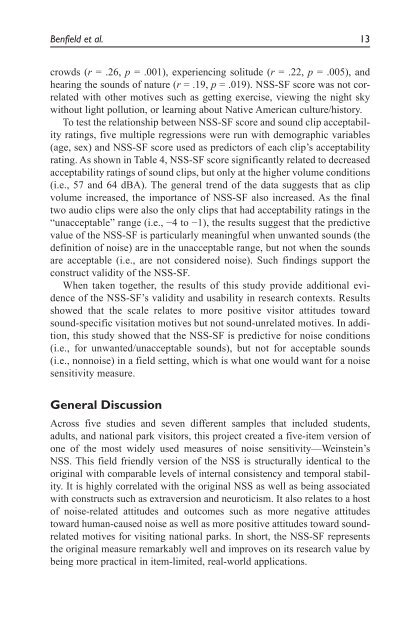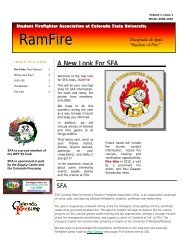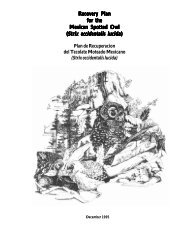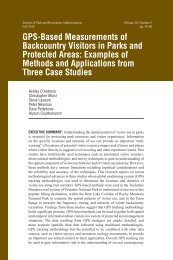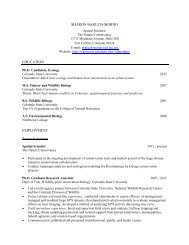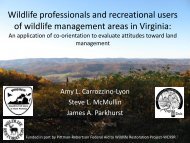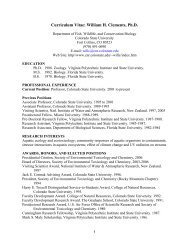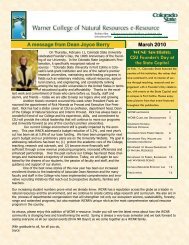Benfield, J.A., Nurse, G.A., Jakubowski, R., Gibson, A., Taff, D ...
Benfield, J.A., Nurse, G.A., Jakubowski, R., Gibson, A., Taff, D ...
Benfield, J.A., Nurse, G.A., Jakubowski, R., Gibson, A., Taff, D ...
Create successful ePaper yourself
Turn your PDF publications into a flip-book with our unique Google optimized e-Paper software.
<strong>Benfield</strong> et al. 13<br />
crowds (r = .26, p = .001), experiencing solitude (r = .22, p = .005), and<br />
hearing the sounds of nature (r = .19, p = .019). NSS-SF score was not correlated<br />
with other motives such as getting exercise, viewing the night sky<br />
without light pollution, or learning about Native American culture/history.<br />
To test the relationship between NSS-SF score and sound clip acceptability<br />
ratings, five multiple regressions were run with demographic variables<br />
(age, sex) and NSS-SF score used as predictors of each clip’s acceptability<br />
rating. As shown in Table 4, NSS-SF score significantly related to decreased<br />
acceptability ratings of sound clips, but only at the higher volume conditions<br />
(i.e., 57 and 64 dBA). The general trend of the data suggests that as clip<br />
volume increased, the importance of NSS-SF also increased. As the final<br />
two audio clips were also the only clips that had acceptability ratings in the<br />
“unacceptable” range (i.e., −4 to −1), the results suggest that the predictive<br />
value of the NSS-SF is particularly meaningful when unwanted sounds (the<br />
definition of noise) are in the unacceptable range, but not when the sounds<br />
are acceptable (i.e., are not considered noise). Such findings support the<br />
construct validity of the NSS-SF.<br />
When taken together, the results of this study provide additional evidence<br />
of the NSS-SF’s validity and usability in research contexts. Results<br />
showed that the scale relates to more positive visitor attitudes toward<br />
sound-specific visitation motives but not sound-unrelated motives. In addition,<br />
this study showed that the NSS-SF is predictive for noise conditions<br />
(i.e., for unwanted/unacceptable sounds), but not for acceptable sounds<br />
(i.e., nonnoise) in a field setting, which is what one would want for a noise<br />
sensitivity measure.<br />
General Discussion<br />
Across five studies and seven different samples that included students,<br />
adults, and national park visitors, this project created a five-item version of<br />
one of the most widely used measures of noise sensitivity—Weinstein’s<br />
NSS. This field friendly version of the NSS is structurally identical to the<br />
original with comparable levels of internal consistency and temporal stability.<br />
It is highly correlated with the original NSS as well as being associated<br />
with constructs such as extraversion and neuroticism. It also relates to a host<br />
of noise-related attitudes and outcomes such as more negative attitudes<br />
toward human-caused noise as well as more positive attitudes toward soundrelated<br />
motives for visiting national parks. In short, the NSS-SF represents<br />
the original measure remarkably well and improves on its research value by<br />
being more practical in item-limited, real-world applications.


